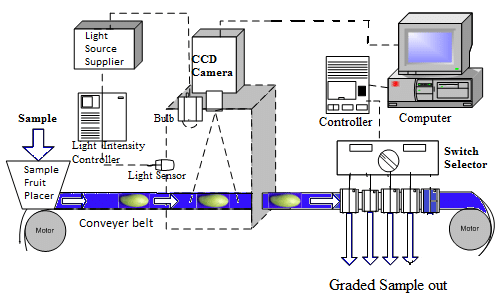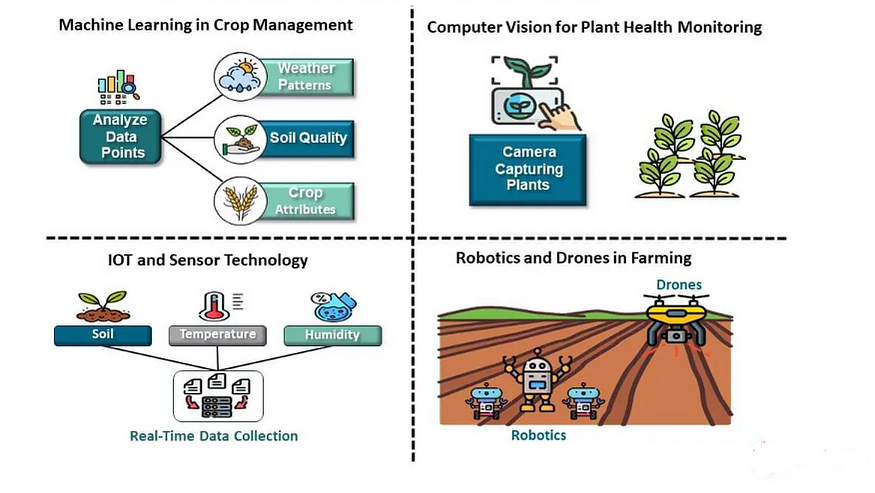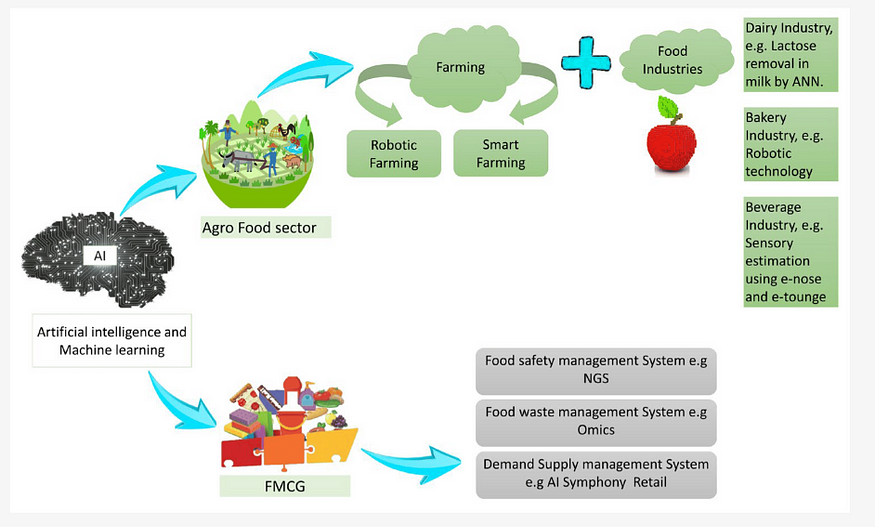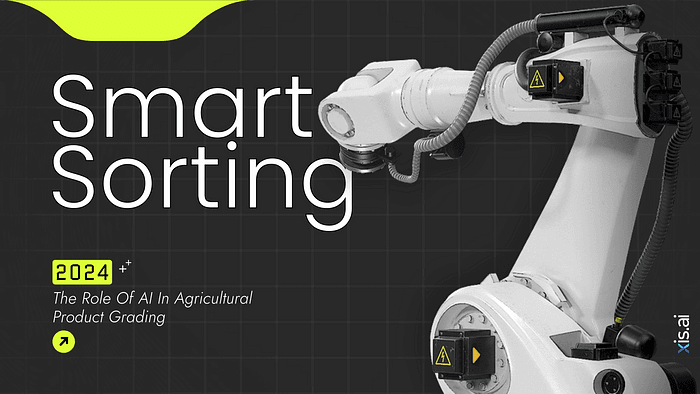Introduction
In recent years, the agricultural industry has undergone significant transformations, with technology playing a pivotal role in enhancing efficiency, productivity, and quality. One area where artificial intelligence (AI) has made a substantial impact is in agricultural product grading. Smart sorting, a process that leverages AI and machine learning algorithms, has revolutionized the way agricultural products are graded, sorted, and processed.
The integration of AI into agricultural grading systems, known as Smart Sorting, is reshaping the way we classify and assess agricultural products. This revolutionary approach leads to improved quality control, reduced waste, and enhanced efficiency. Traditional methods of sorting and grading, often manual and time-consuming, are increasingly unable to meet the demands of a globalized market. AI-driven Smart Sorting addresses these challenges by optimizing various processes in product grading, thereby transforming the agricultural sector, a cornerstone of many economies.

Proposed model of vision-based automated fruit grading and sorting system.
Challenges in Traditional Grading Methods
The manual grading of agricultural products is a labor-intensive and error-prone process that can lead to inconsistencies and inefficiencies. The subjective evaluation of factors such as size, shape, color, defects, and maturity level can result in varying quality standards, delayed time-to-market, and reduced profitability. Traditional grading methods, which rely heavily on human inspection, are time-consuming, labor-intensive, and prone to errors, including missed defects, misclassification, and subjective biases.
To address these challenges, there is a growing need for more efficient and accurate grading systems that can ensure consistent quality and reduce food waste. Implementing advanced technologies, such as computer vision, machine learning, and automation, can help streamline the grading process, increase accuracy, and reduce labor costs. By leveraging these technologies, the agricultural industry can improve product quality, reduce waste, and increase profitability, ultimately meeting the growing demand for high-quality products.

AI’s Transformative Role in Agricultural Product Grading
AI-powered smart sorting systems overcome the limitations of traditional grading methods by utilizing computer vision, machine learning, and sensor technologies. These systems:
Analyze Visual Characteristics: AI algorithms analyze images of agricultural products, detecting defects, imperfections, and quality attributes such as color, shape, size, and texture.
Classify and Grade Products: Based on the analysis, AI systems classify products into different grades, ensuring uniformity and accuracy.
Detecting Defects and Anomalies: AI systems identify defects such as bruises, cracks, or rot, allowing for the prompt removal of subpar products.
Optimize Sorting and Processing: Smart sorting systems optimize the sorting process, reducing waste, and enhancing overall supply chain efficiency.
AI’s ability to analyze vast amounts of data and learn complex patterns offers a transformative solution for agricultural product grading. Here’s how it’s being applied:
- Image Recognition: AI-powered systems accurately assess the visual characteristics of fruits, vegetables, and other produce. Advanced algorithms detect subtle differences in color, shape, and texture, identifying defects and classifying products based on predefined standards.
- Machine Learning: By leveraging historical data on product quality and market prices, AI systems can predict market trends and optimize sorting criteria. This enables farmers and processors to make data-driven decisions and maximize returns.
- Sensor Fusion: Combining data from multiple sensors, such as hyperspectral imaging, near-infrared spectroscopy, and weight sensors, provides a comprehensive picture of product quality. AI analyzes this data to determine internal attributes like sugar content, ripeness, and moisture levels.

Impact of artificial intelligence (AI) and machine learning (ML) in the Agrofood and FMCG sector.
Benefits of AI-Powered Smart Sorting
Accuracy and Uniformity: AI in grading delivers precise and consistent results, analyzing products based on a wide range of criteria with accuracy far surpassing human capability. This uniformity reduces errors and discrepancies, ensuring products are graded consistently.
Efficiency and Speed: AI-driven Smart Sorting systems automate and significantly speed up the grading process. High-resolution cameras and sensors capture detailed images, while AI algorithms process this data in real time, handling large volumes of products efficiently. This rapid processing reduces labor costs and increases productivity compared to traditional methods.
Reduction in Waste: AI-powered smart sorting systems minimize waste by accurately identifying and removing subpar products, preventing lower-quality items from entering premium markets. This precise sorting reduces discarded produce, increases profitability, and lessens the environmental impact of the agricultural industry.
Enhanced Quality: AI systems improve quality control by offering detailed insights into each product’s condition. This data enables producers to make informed decisions regarding handling, packaging, and distribution, ensuring that only top-quality products reach consumers and minimizing the risk of defective or contaminated items.
Cost Savings: Although the initial investment in AI technology may be substantial, long-term cost savings are significant. Reducing the need for manual labor, minimizing waste, and enhancing overall efficiency lead to operational cost reductions. Increased accuracy and speed contribute to better financial outcomes for producers.
Evidence-Based Decisions: The insights generated by AI can help farmers and processors make informed decisions about planting, harvesting, and marketing strategies.
Practical Applications
AI-powered smart sorting is being successfully implemented in various agricultural sectors, including:
- Fresh Produce: Companies like Tomra and Key Technology are using AI-powered sorting systems to grade fruits and vegetables.
- Grains and Seeds: AI-powered sorting systems are being used to grade grains and seeds, ensuring high-quality products for food and animal feed.
- Dairy and Meat: AI-powered systems are being used to grade dairy products and meat, ensuring quality and safety.
The Future of Smart Sorting
The integration of AI in agriculture is still in its early stages, with immense potential for growth. Advancements in computer vision, machine learning, and sensor technology will continue to drive innovation in this field. As AI becomes more sophisticated, we can expect to see even more precise and efficient sorting systems that benefit farmers, processors, and consumers alike.
Conclusion
Smart Sorting marks a major advancement in agricultural product grading. By leveraging AI, producers can achieve unmatched precision, efficiency, and quality control. As technology continues to advance, it is set to deliver even greater benefits, paving the way for smarter, faster, and more sustainable grading practices. AI-powered smart sorting is revolutionizing the agricultural industry by offering an efficient, accurate, and cost-effective solution for grading and sorting products. With the rising demand for high-quality goods, the adoption of these systems is expected to grow, transforming the grading, sorting, and processing of agricultural products.
About xis.ai
xis.ai automates visual quality inspection with AI and robotics. With a camera and no code computer vision platform that enables non-technical industrial users to develop, deploy, and use Automated Visual Inspection (AVI) in any industry in minutes.



